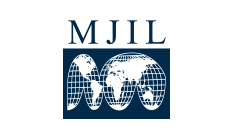Abstract
It is the orthodox belief that treaties and—within the EU—directly applicable regulations represent hard, binding international law, while other international instruments—including model laws—are forms of soft law. In a previous publication(The Future of Cross-Border Insolvency: Overcoming Biases and Closing Gaps), I discussed how the traditional distinction between hard and soft law is less firm, due particularly to economic and behavioural implications of instrument choice and design. Building on that analysis, this Article focuses on the new rules for the international insolvency of enterprise groups in the Recast EU Insolvency Regulation 2015 (the “EIR”) and in the forthcoming UNCITRAL model law on enterprise groups. Contrasting the instruments and using a multi-layered assessment illustrates the blur between hard and soft law. This Article argues that only on the first layer—the agreement to participate in the international instrument—is the EIR (chapter on groups) robustly harder than the UNCITRAL instrument. On the second and third layers—enforcement of the instrument and the agreement on hard, more complete rules within it—the UNCITRAL instrument is almost as hard or even harder than the EIR and, as such, more promising. The Article also provides certain concrete conclusions regarding the way that regional and global regimes may be hardened in the future to meet the challenges of enterprise groups’ insolvencies.
Recommended Citation
Irit Mevorach,
A Fresh View on the Hard/Soft Law Divide: Implications for International Insolvency of Enterprise Groups,
40
Mich. J. Int'l L.
505
(2019).
Available at:
https://repository.law.umich.edu/mjil/vol40/iss3/6
Included in
Bankruptcy Law Commons, European Law Commons, Legislation Commons

